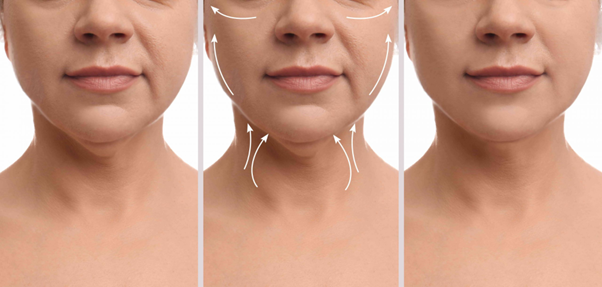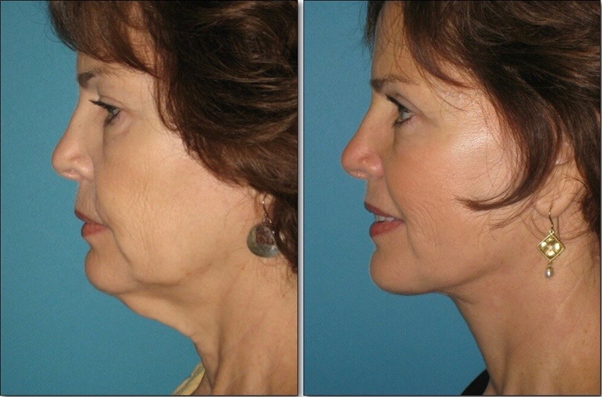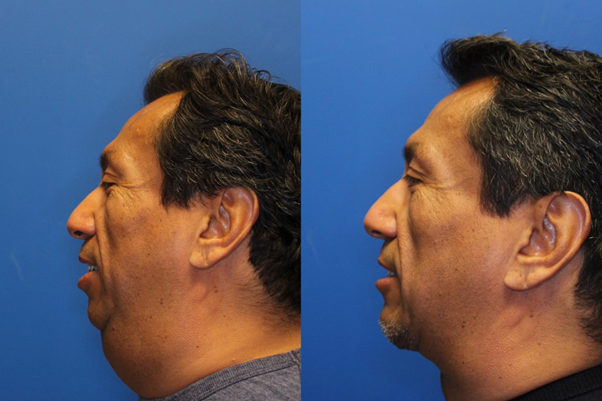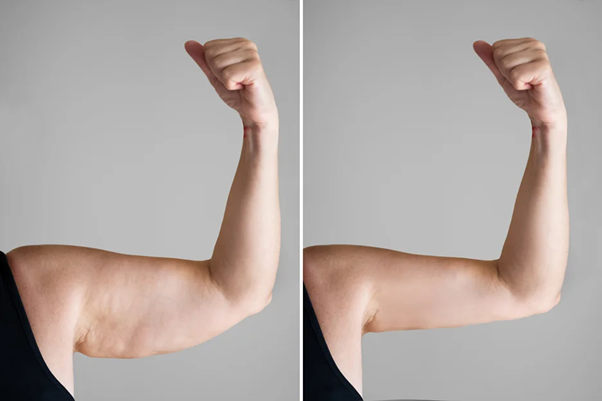Aging, genetics, weight fluctuations, and environmental factors can all contribute to loose, sagging skin around the neck. While skincare and non-invasive treatments may offer some improvement, a neck lift surgery provides a long-term solution for a youthful and sculpted appearance. If you are considering a neck lift, this guide will walk you through everything you need to know.
Neck lift surgery is a cosmetic procedure designed to enhance the appearance of the neck, tightening underlying muscles, and improving contour.
What is Neck Lift Surgery?
A neck lift (lower rhytidectomy) is a cosmetic surgical procedure designed to tighten loose skin, remove excess fat, and enhance the contours of the neck and jawline. By addressing sagging skin, muscle laxity, and fat accumulation, a neck lift restores a more youthful and defined appearance.
This procedure is often performed alongside a facelift for comprehensive facial rejuvenation but can also be done as a standalone surgery for those primarily concerned with neck aging.
Who is a Good Candidate for a Neck Lift?
A neck lift is an excellent option for individuals looking to improve the appearance of their neck and jawline. You may be a good candidate for this procedure if you:
- Have excess sagging skin or wrinkles around the neck, often referred to as “turkey wattle.”
- Struggle with a double chin or accumulated fat beneath the jawline.
- Want to restore a youthful neckline while maintaining a natural look without drastic changes to facial features.
- Have good overall health and no medical conditions that could interfere with healing.
- Have realistic expectations, understanding that while the procedure provides long-lasting results, it does not stop the natural aging process.
- Have lost skin elasticity due to aging, genetics, or significant weight loss.
If you’re unsure whether a neck lift is right for you, a consultation with a board-certified plastic surgeon can help assess your unique needs and recommend the best approach for optimal results.
Types of Neck Lift Procedures
A neck lift surgery is not a one-size-fits-all procedure. Depending on your concerns and goals, your surgeon may recommend one of the following techniques:
1. Traditional Neck Lift
This procedure involves making incisions behind the ears and sometimes under the chin. The surgeon tightens muscles, removes excess skin, and repositions tissue for a firm and natural look.
2. Mini Neck Lift
A less invasive option, the mini neck lift focuses on mild sagging and requires smaller incisions. Recovery time is shorter, making it an excellent choice for those with early signs of aging.
3. Neck Liposuction
If excess fat is the primary concern rather than loose skin, liposuction alone may be sufficient to achieve a more defined neckline.
4. Platysmaplasty (Muscle Tightening Surgery)
This technique tightens the platysma muscles in the neck, which often become loose with age, causing vertical banding.
A skilled surgeon will customize the procedure based on the patient’s anatomy and aesthetic goals.
Neck Lift Surgery is often combined with a facelift or other cosmetic enhancements like liposuction or chin augmentation for more comprehensive results.
The Neck Lift procedure: Step-by-Step
A neck lift typically takes two to three hours and is performed under general anesthesia or local anesthesia with sedation. Here’s what you can expect:
Step 1: Consultation & Preparation
During your consultation, your surgeon will evaluate your skin, discuss your desired outcome, and determine the best surgical approach. You may be advised to stop smoking, avoid certain medications, and follow a skincare regimen before surgery.
Step 2: Anesthesia
The procedure begins with the administration of anesthesia to ensure comfort. Your surgeon will recommend either general anesthesia or intravenous sedation based on the complexity of the surgery.
Step 3: Incisions
Depending on the technique used, incisions are strategically placed behind the ears and/or under the chin. These incisions allow access to underlying muscles and fat.
Step 4: Tightening & Contouring
- Excess fat is removed or repositioned through liposuction.
- Loose muscles are tightened for long-lasting support.
- The skin is redraped and trimmed for a smooth appearance.
Step 5: Closing the Incisions
The incisions are closed with sutures, and bandages are applied to minimize swelling. Your surgeon may place a small drainage tube to prevent fluid buildup.
Recovery and Aftercare
1. What to expect after surgery?
- Swelling and bruising are common in the first week.
- A compression bandage may be required to support healing.
- Mild discomfort and tightness can be managed with pain medication.
- Most patients resume light activities within 10-14 days.
- Strenuous activities and heavy lifting should be avoided for at least 4-6 weeks.
2. Tips for recovery
- Keep your head elevated while sleeping.
- Avoid smoking and alcohol to promote healing.
- Follow your surgeon’s post-op care instructions carefully.
- Stay hydrated and maintain a healthy diet rich in vitamins and proteins.
Neck Lift Surgery: Results & Longevity
Most patients notice visible improvements within a few weeks, with final results settling in after 3-6 months. The longevity of your neck lift depends on factors such as skin quality, lifestyle habits, and proper skincare. While the procedure does not stop aging, it can rewind the clock by 10-15 years, offering long-lasting rejuvenation.
Maintaining a stable weight, sun protection, and a good skincare regimen can help extend the benefits of your refreshed, youthful appearance.
Consulting with a qualified plastic surgeon ensures the best outcome tailored to your needs.
Are there any risks involved?
Like any surgical procedure, a neck lift carries potential risks, including:
- Swelling & Bruising – Typically lasts for 1-2 weeks, gradually improving over time.
- Temporary numbness or tingling – Nerve sensitivity may take a few weeks to fully restore.
- Mild discomfort or Tightness – Usually subsides within a few days with proper aftercare.
- Minor scarring – Incisions are strategically placed behind the ears and under the chin to minimize visibility, and scars fade over time.
Although uncommon, more serious complications can occur:
- Infection – Signs include excessive redness, warmth, or pus at the incision site. Antibiotics can help prevent this.
- Hematoma – A rare but serious complication requiring immediate medical attention.
- Nerve Damage – In rare cases, temporary or permanent changes in sensation or movement can occur.
- Skin Irregularities or Asymmetry – May require revision surgery if noticeable.
While risks exist, most patients experience smooth recoveries and highly satisfying results when under the care of a skilled surgeon. Always discuss your medical history, concerns, and expectations with your doctor before undergoing the procedure. Choosing an experienced and board-certified surgeon like Dr. Havard significantly minimizes these risks and ensures a safe and successful outcome.
Why Choose Dr. Havard for your Neck Lift Surgery?
At Dr. Havard’s, we understand that every patient has unique needs and expectations. Our clinic is dedicated to providing:
- Customized treatment plans tailored to your goals.
- State-of-the-art surgical techniques for natural-looking results.
- A caring and professional environment that prioritizes patient safety.
Dr. Havard is a renowned expert in facial rejuvenation, with years of experience in delivering remarkable transformations. Whether you’re looking for a full neck lift or a minimally invasive approach, our team is here to guide you every step of the way.
Say goodbye to sagging skin and hello to a beautifully contoured neckline! Contact Dr. Havard’s today to schedule a consultation and take the first step toward a more youthful you.















